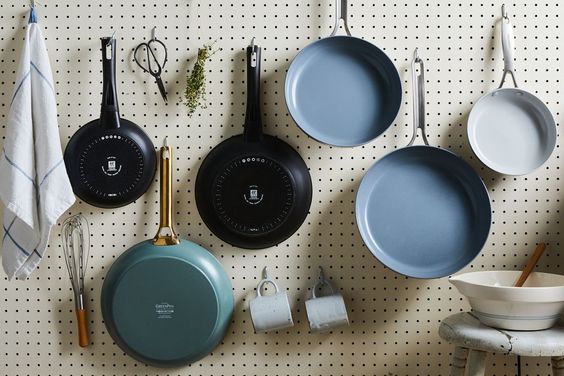Don’t just enjoy the convenience that kitchen utensils bring to you, it’s also necessary to use and clean them correctly. Non-stick pans not only allow us to make delicious dishes, but also prevent them from sticking to the surface. Anyone who cooks knows how worry-free this is. Non-stick pans are coated with polytetrafluoroethylene so food doesn’t stick to the surface. Because of the existence of this protective film, its care is necessary, and daily scratches and scratches should be avoided.
In addition to daily care, correct cleaning steps are also very important. If you don’t know how to do it, we have written down detailed steps for you to refer to. Let’s take a look.
Don’t rush to rinse the pot under cold water before cleaning, as this will damage the surface of the pot, so leave the pot for a while to cool down. Prepare a fiber sponge and non-irritating dish soap. The instruction manual of some pots may say that they can be put into the dishwasher. In fact, we do not recommend this as it will damage the coating inside the pot. When you are ready, you can start cleaning.
Tools needed
Fiber sponge/soft towel
Mild dish soap
White vinegar
Baking soda
Warm water
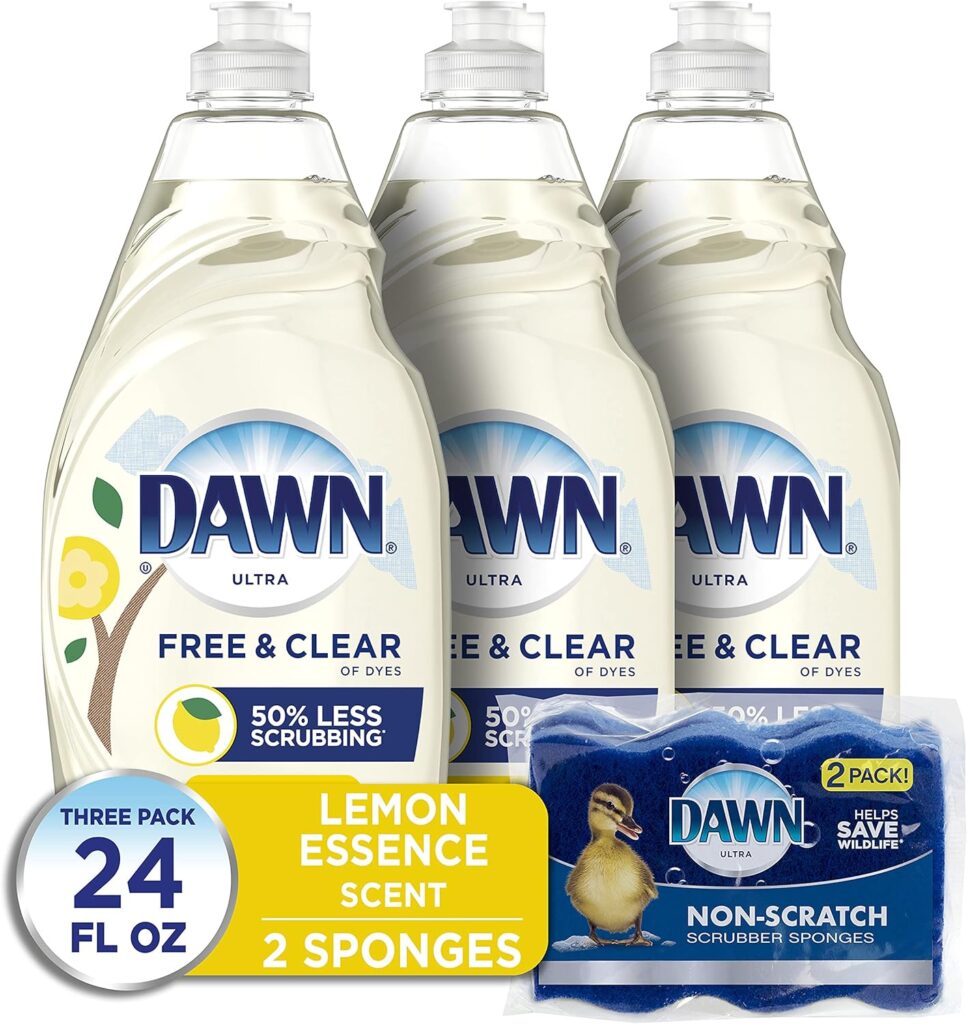
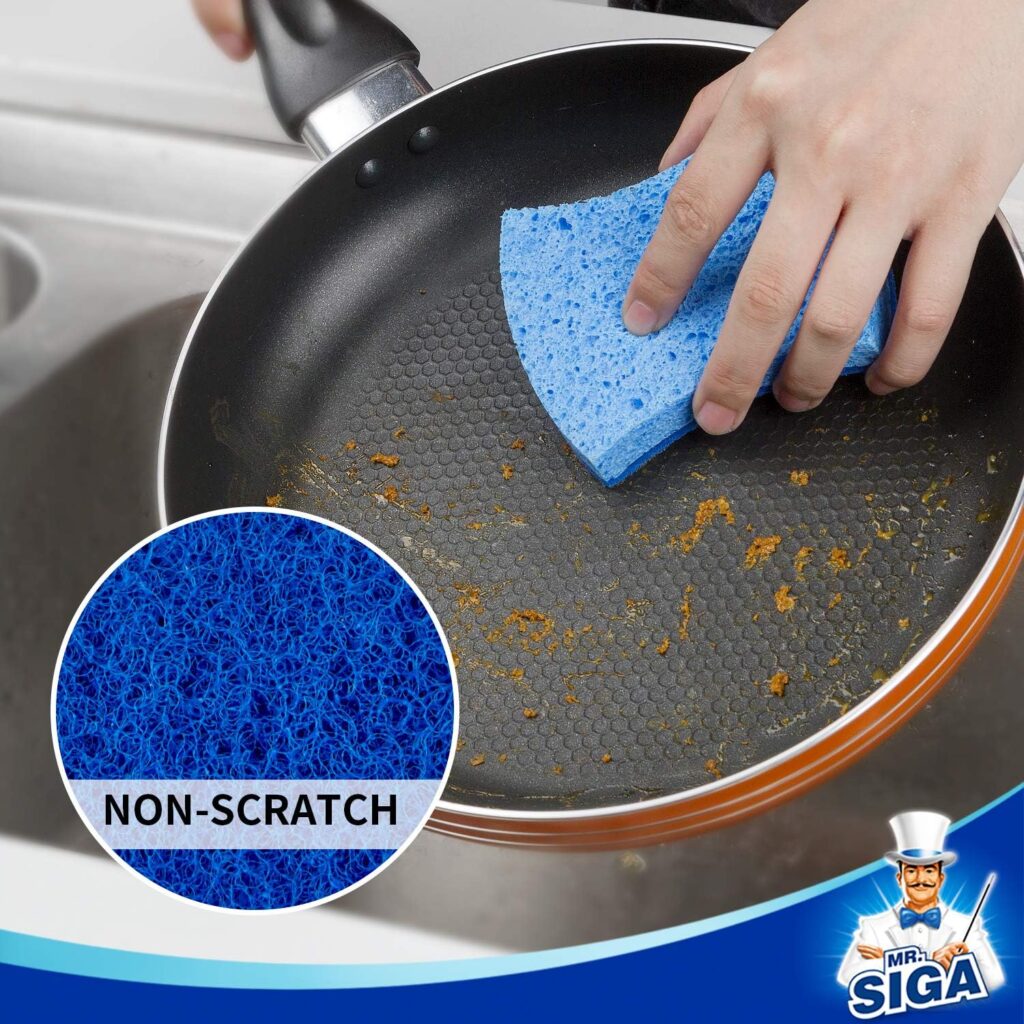
Image From Amazon
How to clean a nonstick pan
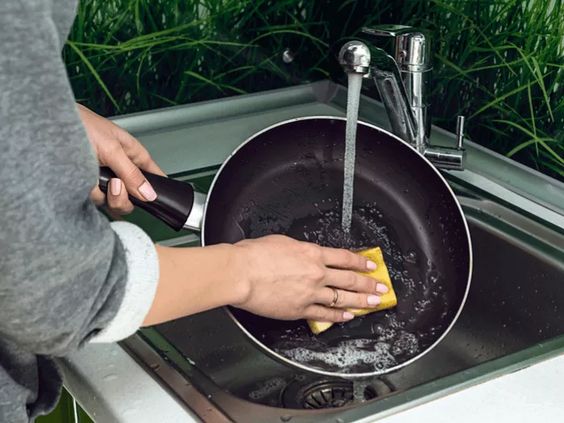
Image From quickanddirtytips.com
Step 1: Set the pot aside to cool down, then put it under warm water and soak it for one minute.
Step 2: Pour away the floating grease, fill the fiber sponge with warm water, add some detergent, and rub it on the pot surface to create foam. If there are no food residues left on the pot surface due to burning, just remove the oil stains. Be careful not to use strong detergents as the high chemical content may damage the coating on the pot surface. And do not use cleaning items such as steel wool, which will also damage the coating on the pot surface.
Step 3: After cleaning twice, rinse with warm water, and then wipe the pot surface dry with a dry rag.
How to clean a burnt nonstick pan
Why does burnt matter occur
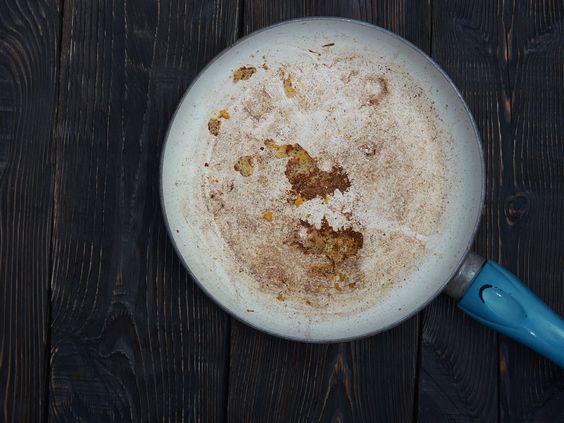
Image From foodandwine.com
It could be that the temperature is too high and the food is left in the pan for too long, causing the food to stick to the pan. If you need to cook food at high temperature for a long time, you can simply change it to another pot or add enough oil. If you use it for a long time, the coating will be damaged. In fact, the special filter element in the non-stick pan is enough to spread the heat to the surface of the pot quickly, so you can achieve good cooking results without turning on a high heat with a non-stick pan.
How to clean
There are two ways to clean it. Because the stickiness will be stronger, you can soak it in hot water for a while, about ten to fifteen minutes. After pouring out the hot water, you can use a fiber sponge moistened with warm water and add detergent to the pot to clean it. If there is sticky matter, you can scrub it harder. After cleaning the pot, rinse the foam and wipe it dry. That’s it.
The second method is to use baking soda and vinegar, both of which are known to be used both for everyday cooking and cleaning. You can also use this method if you have any burnt material on a non-stick pan that is difficult to remove. Put a small amount of water in the pot on low, add vinegar and baking soda in a ratio of 1:1, and stir evenly with a spoon (it is best to use a wooden spoon, not an iron spoon). The burnt material will wash off easily after waiting for a while. Then pour the mixture away and perform daily cleaning and drying.
How to care for your nonstick pan
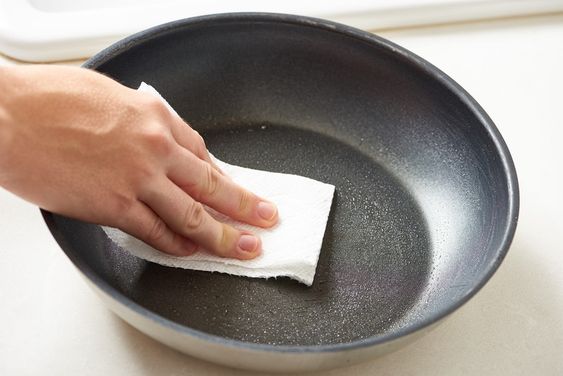
Image From thekitchn.com
- Avoid using some metal kitchen utensils for cooking with non-stick pans. The surface of non-stick pans is easily scratched. You can use wooden kitchen utensils or silicone kitchen utensils for cooking. These products are also high temperature resistant.
- Do not continue cooking over high heat. Cooking over high heat can cause food to burn and stick to the surface of the pot, making it difficult to clean and destroying the non-stick properties. And high temperatures can also damage the coating of non-stick pans, so it’s best to keep it below 450 degrees Fahrenheit. Part of the reason why we use non-stick pans is to use less oil and maintain a healthy diet, so if the temperature is kept high for a long time and there is not enough oil, it will cause burning.
- Clean the non-stick pan promptly and do not leave it for too long.
- Season the non-stick pan from time to time. The non-stick pan may become less non-stick over time. But if we take proper care of it and season it regularly, we can prolong its non-stick properties. After you clean it, you can use a paper towel to smear oil in the pot and heat it for five minutes. Let it cool and then use a paper towel to wipe off the excess oil. This completes the seasoning.
Kitchenware, it also likes people, and needs care. If you only remember to use it every day and don’t remember to cherish it, you will only lose it faster. A kitchen utensil that is easy to use is like our friend and comrade-in-arms. Only when you are cooking will you know how important it is to you. So clean and maintain your non-stick pan well!
